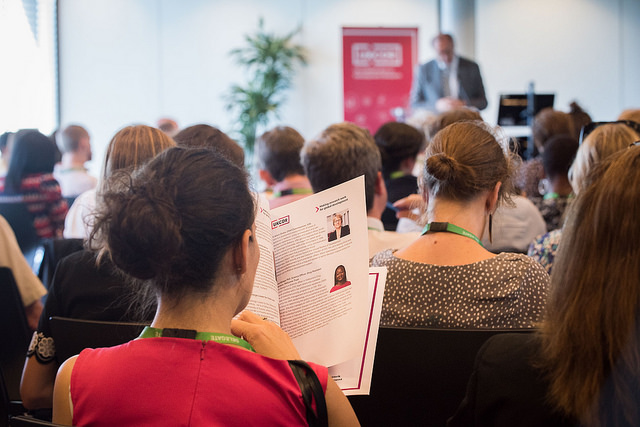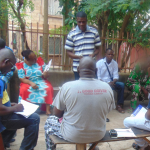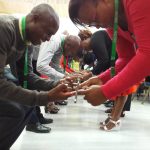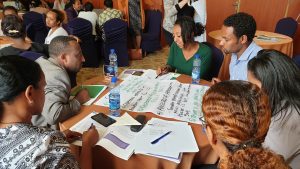
Making the UK’s research count
Jon Harle reflects on the importance of collaboration and capacity development for research impact
Last week I was in London for the re-launch of the UK Collaborative on Development Research (click here to see ‘moments’ from the launch). In the last few years the UK government has significantly increased its funding for research on global development challenges. By 2021 there will be something like £1.2 billion spent each year on what’s referred to as ‘ODA-funded research’. Just three years ago it was £390 million. Under the new Strategic Coherence for ODA-funded Research (SCOR) Board, UKCDR is poised to p lay a critical role in ensuring this spending is connected, coherent, and leads to greater impact.
lay a critical role in ensuring this spending is connected, coherent, and leads to greater impact.
It was a useful discussion space that emphasized some important points about the UK’s contribution to development research. It was also refreshing to hear some influential figures willing to talk about issues that get a lot less attention.
While they were identified as problems to be tackled, I think there are already plenty of ideas, and expertise, about how to do so — here in the UK, but, more importantly, in the Southern research communities that we seek to support.
1. Doing capacity development well
The panel was frank that, despite all the rhetoric about the importance of developing local capacity, as a community, the UK doesn’t do this particularly well. As Dr Alison Evans noted, too often ‘capacity support’ is simply tacked onto a project. Others observed that, while providing funds for PhD scholarship and post-doctoral fellowships is important, it’s not sufficient to really grow and sustain the capacity of research systems.
Without a doubt, the UK research community has much-needed expertise and knowledge and working with Southern partners means that can be brought to bear to tackle complex global challenges. But capacity development is hard to do well; it needs not only a different set of expertise, but also dedicated time, leadership and support from team members focused specifically on helping projects achieve a more enduring legacy. We’ve written more about how we can design for more enduring projects here as well as documenting our learning.
2. Getting beyond the usual suspects
Prof Chris Whitty’s observation that resources are still too concentrated in a cluster of stronger and better-known universities and research institutes – leaving many more talented researchers and high-potential institutions out – was an important one. The rapid expansion of funding, and sometimes with insufficient existing relationships, is likely to further concentrate funding on the best-known centres.
Many organizations work with a much wider network of partners, and can help to identify alternative centres where there are passionate teams doing excellent work, and where a research partnership might have a more transformative impact. Broadening networks is an important first step. But panels assessing and awarding grants will also need to be open to a more diverse set of institutional partners, while recognizing that this might also require greater investment in capacity development too!
3. Not separating research from higher education
Dr Anne Makena’s useful intervention drew attention to the way funding and projects tend to separate out research from higher education, which isn’t particularly helpful for strengthening knowledge producing institutions in the South. It can divert attention and efforts away from critical learning and teaching, neglecting the next generation. For many academics in the North as well as in the South, research and teaching are both important aspects of the job.
Alongside its major investments in research, DFID has recently funded some exciting new work to support higher education. Enabling undergraduate students to be part of research projects could be one way to make the connections, enhance their learning, and remove the tension for faculty trying to juggle both. They’re questions we’ll be exploring with partners through the Transforming Employability for Social Change in East Africa project, as we think about taking learning beyond the classroom.
4. Getting to grips with impact
While impact is critical, and there are some good case studies of success, the panel was clear that we’ve got to do better there too. As Dr Janet Midega explained, that means working with communities, and with policymakers and practitioners as full partners in the process – not simply inviting them to an end of project dissemination event. There is much greater emphasis on impact in UK research, but we still often assume a fairly linear translation of excellent research into policy and practice, and the focus is often still on the academic paper in the top-ranked journal.
But then why should we expect all research teams to also understand the complex dynamics of policy-making processes, or how to navigate community-engagement processes? Again, there is considerable expertise to draw on. We’ve pulled together here some tips from what we and our partners have learnt over the years, and the RAPID team at ODI has a useful new REF impact toolkit. When it comes to working with communities, Nigerian academic Ayo Ojebode urges us to ‘let go of the leash’. Further lessons on the social processes of generating and communicating research have been compiled in some useful pieces from the ESRC’s Impact Initiative.
If there’s a theme which runs through these four issues and suggestions for how we can do better, it’s about recognizing when we need to work with other organizations and individuals to enhance our contributions and impact. If we can take those steps as a community in the UK, with our partners in Africa, Asia and Latin America, we stand to make a much greater contribution to our shared challenges, and have a much greater impact on the lives of the poorest and most marginalized.

 Previous Post
Previous Post Next Post
Next Post

